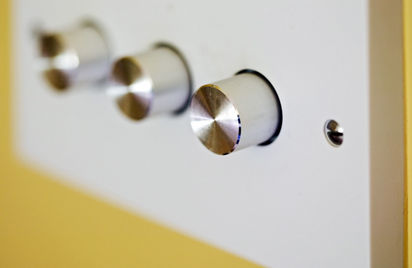Dimmable LEDs - Myths And Misconceptions Illuminated
Posted by Richard Clarke on 22nd Sep 2011
 Every time a new type of technology is introduced, misconceptions inevitably build around it, especially if it’s a vast improvement upon the technology it’s replacing.
Every time a new type of technology is introduced, misconceptions inevitably build around it, especially if it’s a vast improvement upon the technology it’s replacing.
This is exactly what occurred several years ago with the inauguration of dimmable LED lights.
Don’t Believe The Myth
People were labouring under the misapprehension that it’s impossible to dim LED lights, however, they couldn’t have been further from the truth.
Admittedly, there was a time when LEDs weren’t dimmable, but the technology has advanced at such an incredible rate that all of the issues that plagued the initial models have now been more than eradicated, meaning that nowadays LEDs are on a par with and even ahead of traditional incandescent and halogen bulbs.
The difficulties arose as conventional dimmer switches are designed to operate at a much higher load than the incredibly energy-efficient, low-voltage LED bulbs are designed to handle. The problem was that LED bulbs were simply too efficient, and required a new type of low-load dimmer switch.
This situation was very quickly addressed by forward-thinking companies such as Varilight, which even incorporated a revolutionary soft start system into its V-Pro range of trailing edge rotary dimmer switches to combat the historical issues that LEDs experienced with voltage fluctuation.
Still more advanced is the range of V-Pro touch dimmers which are fully controllable from the comfort of your armchair via an IR (Infra-Red) remote.
And for the ultimate in controllability, innovator LightwaveRF has designed a home automation system that enables you to download an app and operate your LED lights using your smart phone or tablet, from anywhere in the world!
So, because dimmer switches are already very popular with homeowners, now that the issues with LEDs have been fully ironed out, they’re set to enter the nation’s zeitgeist in a very big way, especially given the fact that traditional, wasteful incandescent and halogen bulbs are due to be phased out as of September 2018.
Improve Your Energy-Efficiency To Save £££s
LEDs are already more energy-efficient than both types of traditional bulb. They cost 90% less to run, producing the same number of lumens for 1/10th of the energy.
Using a dimmable bulb like the GU10 LED 27 SMD will enable you to make still further savings, as you’ll have more control over the brightness and thus, the energy being used.
Monty Gilbertson of the American Lighting Association is a huge fan of dimmer switches. "These are often overlooked, but will save energy," he says. "If you reduce your voltage 10% on a dimmer, you will double the bulb life and save energy and money.”
Thus, replacing just one of your existing 50 watt incandescent bulbs with an energy-saving LED, you will save £3.37 based on a 10 hour working day, and 10% more if it’s used with a dimmer switch!
And, bear in mind that lighting represents up to 20% of our household energy expenditure, so just imagine how much you’ll save if you replace all your existing bulbs!
All LED bulbs have an incredibly long life-expectancy, especially as Gilbertson mentioned, if they’re used in conjunction with a dimmer. Their 50,000 hour life-spans mean they’ll still be going strong in 17.12 years, an enormous improvement on both types of traditional bulb.
The Incredible Versatility Of Dimmable LEDs
The aforementioned LED bulb is also particularly versatile, coming in a choice of three colour temperatures, all of which will allow you to enhance the ambience of your room according to its function.
For example, in areas such as the living room or bedroom, you might choose to have a dimmable bulb like the one mentioned above, in a warm white (3000K) option, as you’ll want to create a mellow, relaxing atmosphere.
The best-selling, non-dimmable GU10 LED 80 SMD in the daylight white (4000K) might be your choice for office areas, as its light is very similar to that of natural daylight. This light quality is also now being used in people’s living spaces, so the choice is yours.
For kitchens and bathrooms, people often decide to utilise cool white (6000K) colour temperature, as its bright, penetrative light is ideal for task-related activities like cooking and personal grooming.
So you see, dimmable LEDs really are the very best option for your home. They’ll not only allow you to save a considerable amount on electricity bills and replacements, they’ll also enable you to augment your ambience and win arguments about whether they’re dimmable or not!





